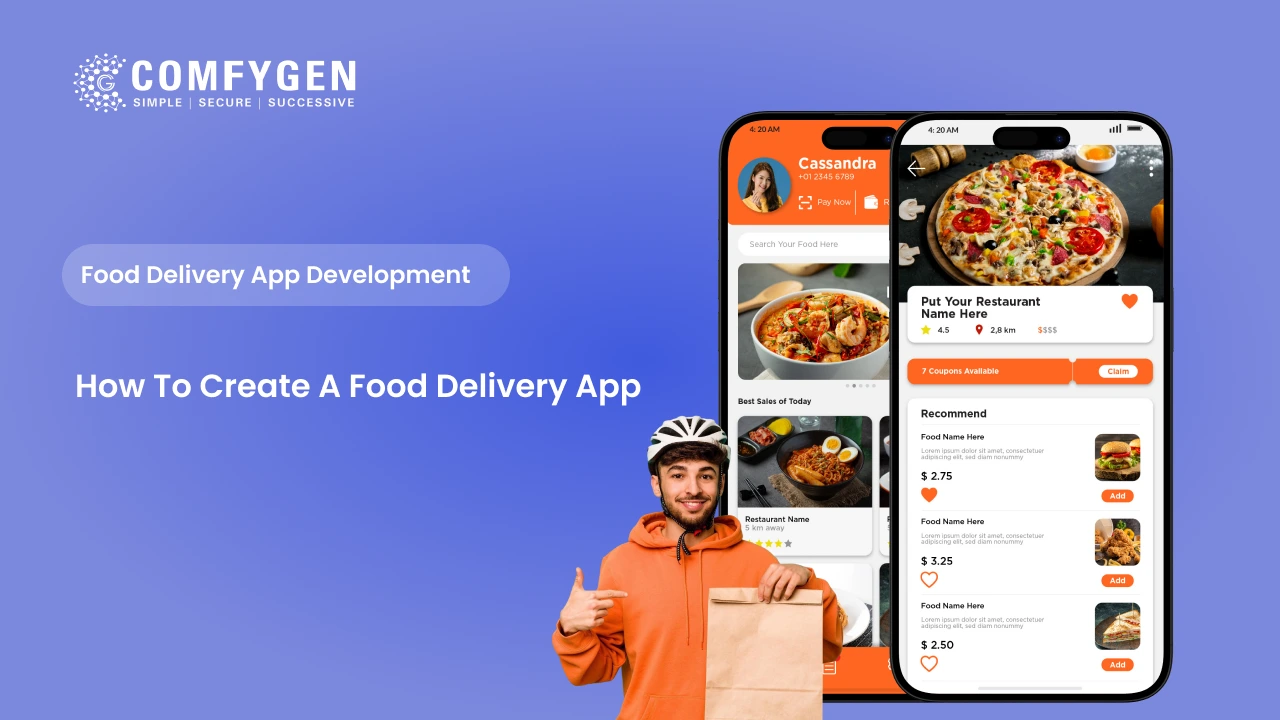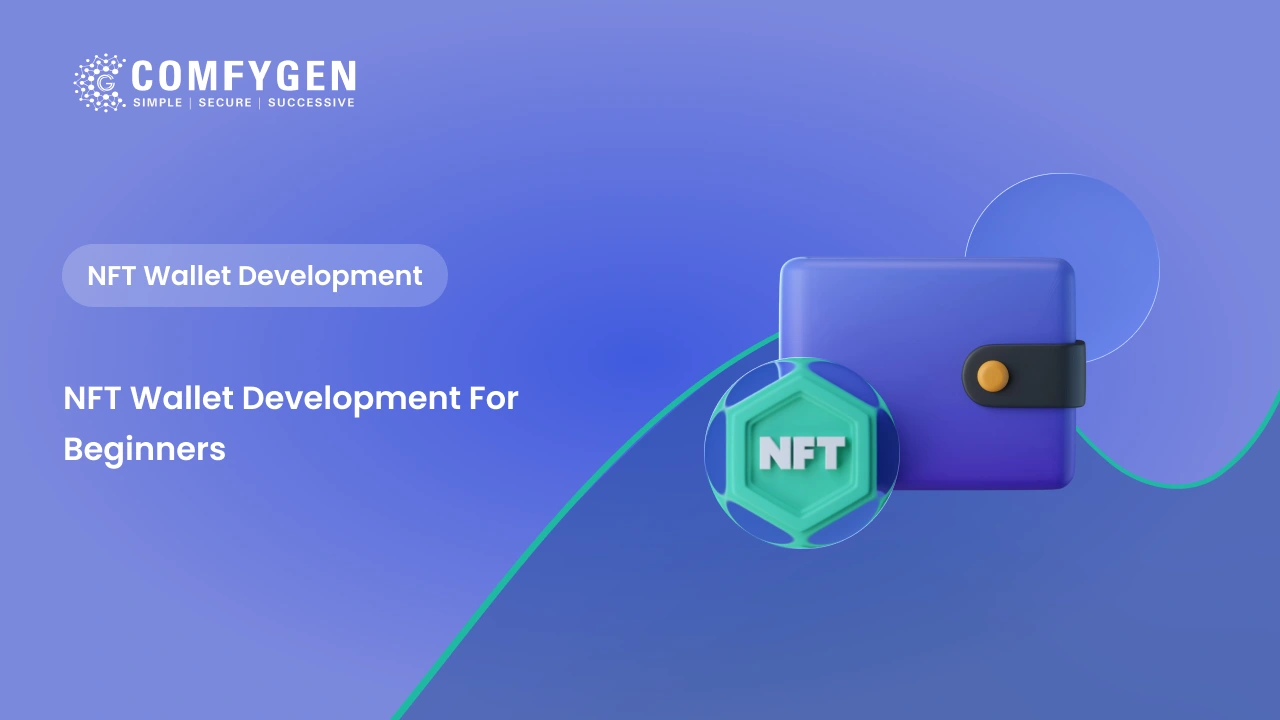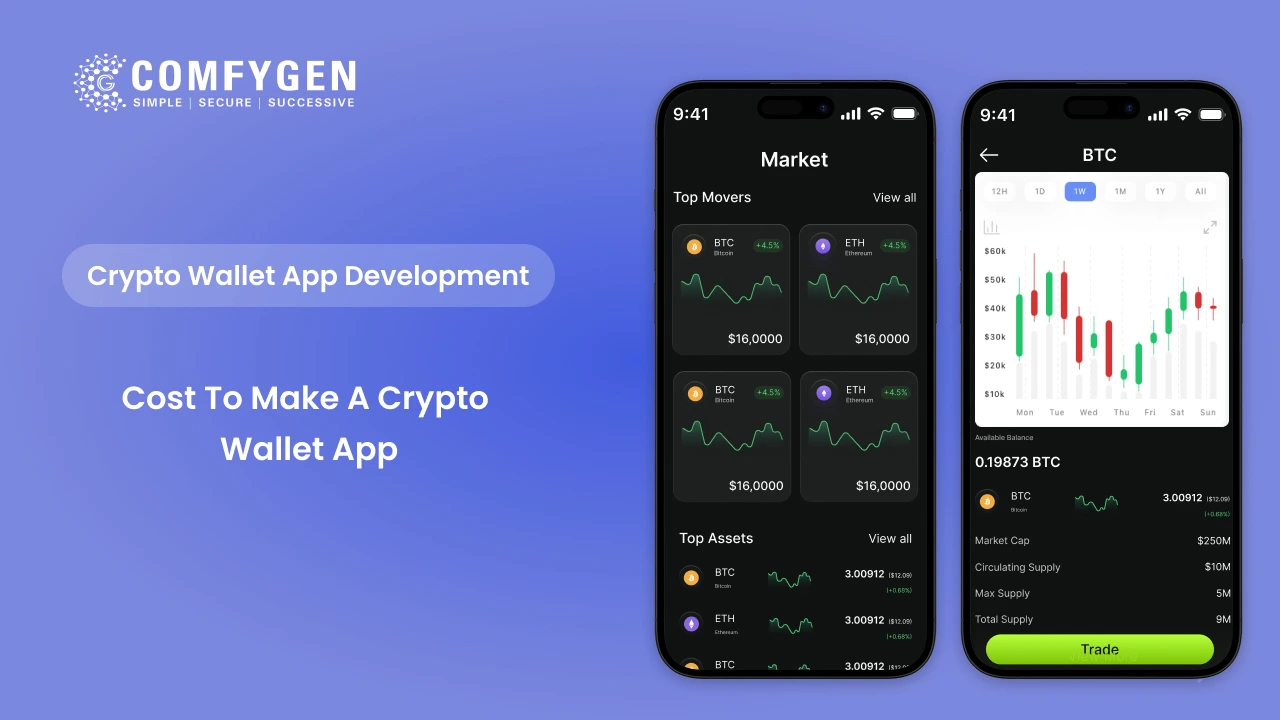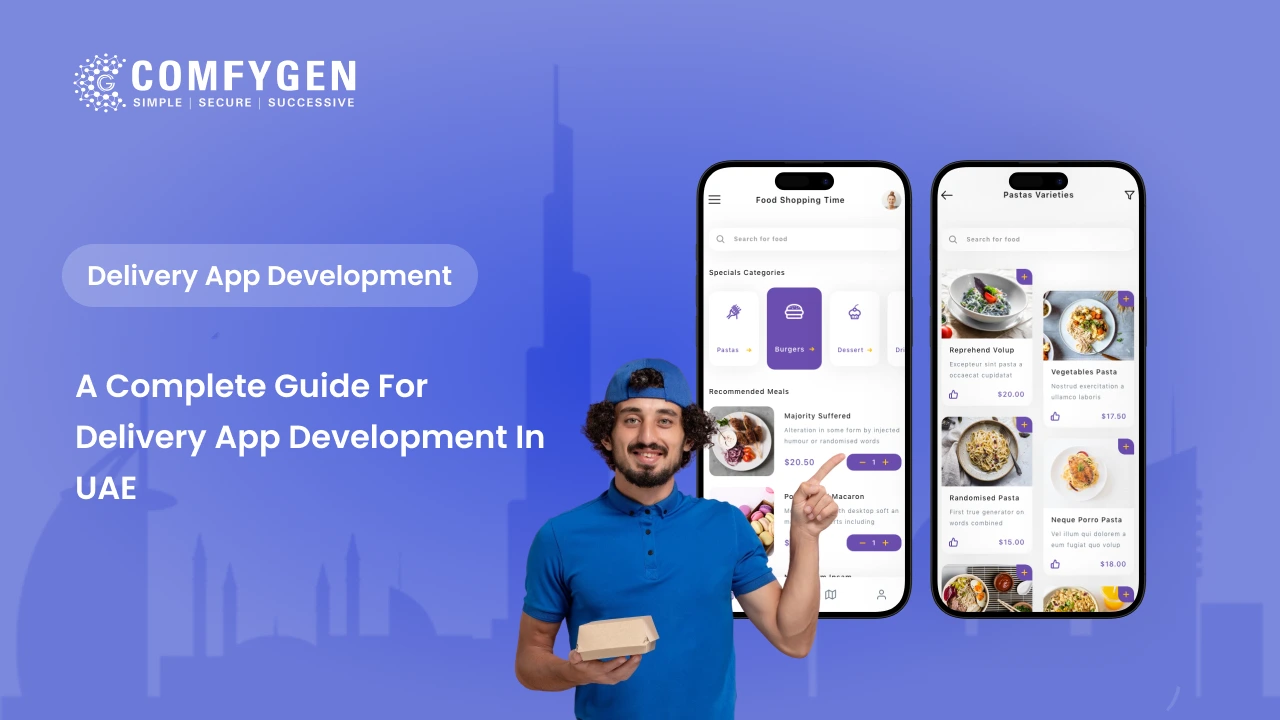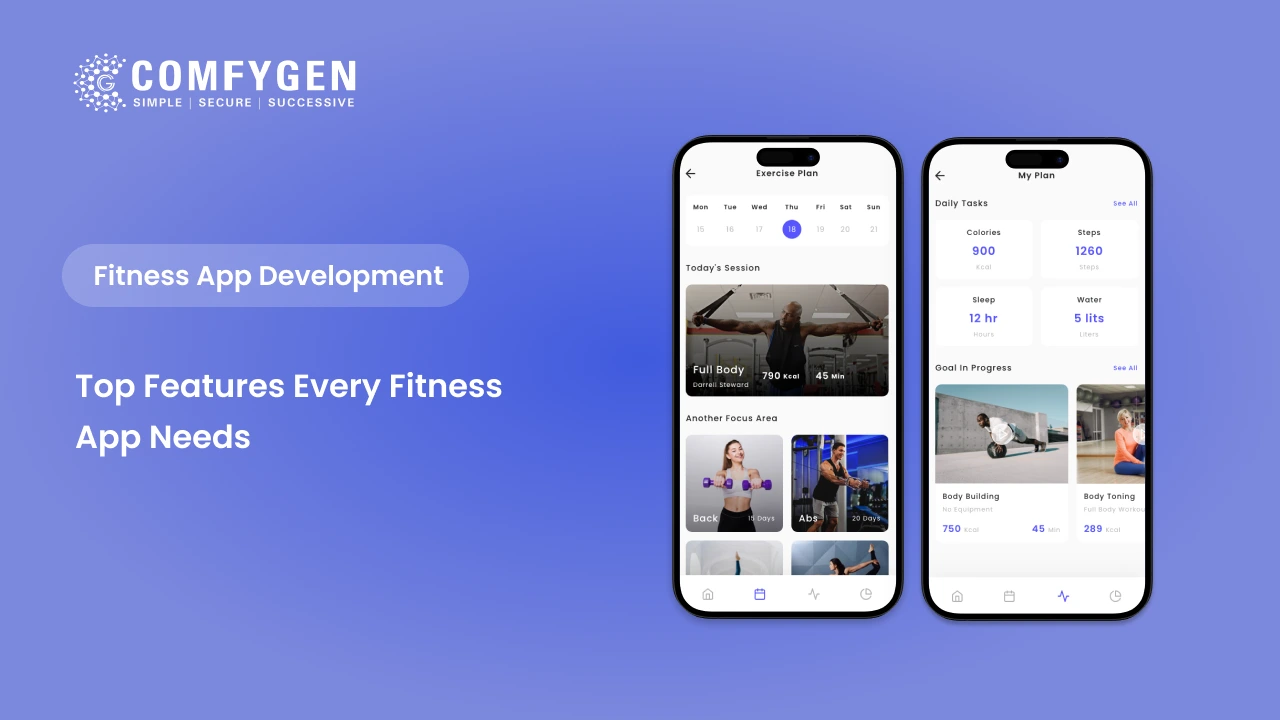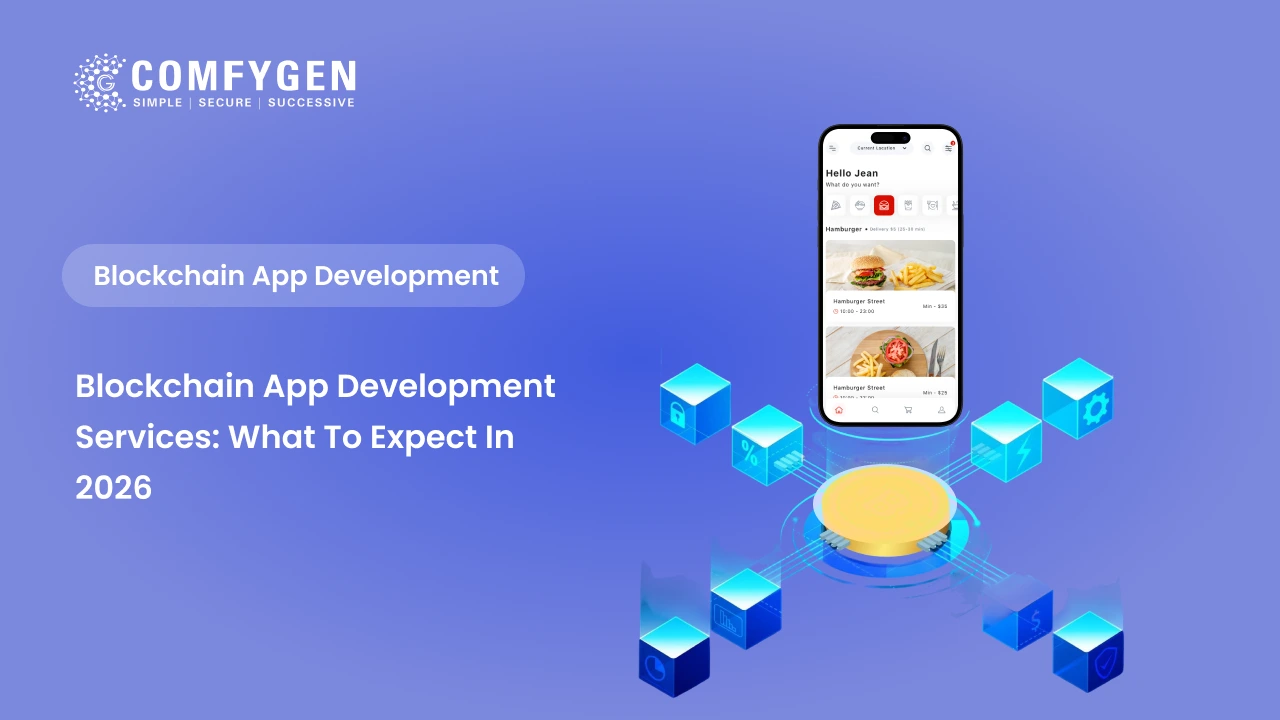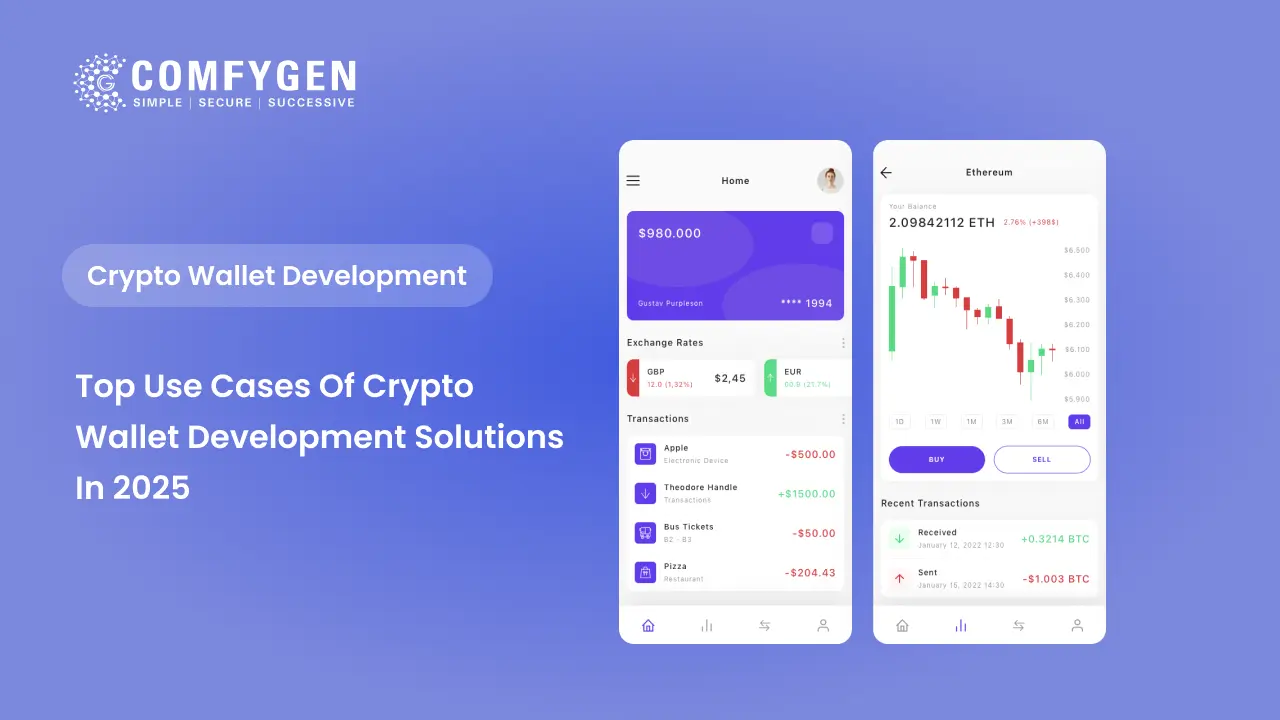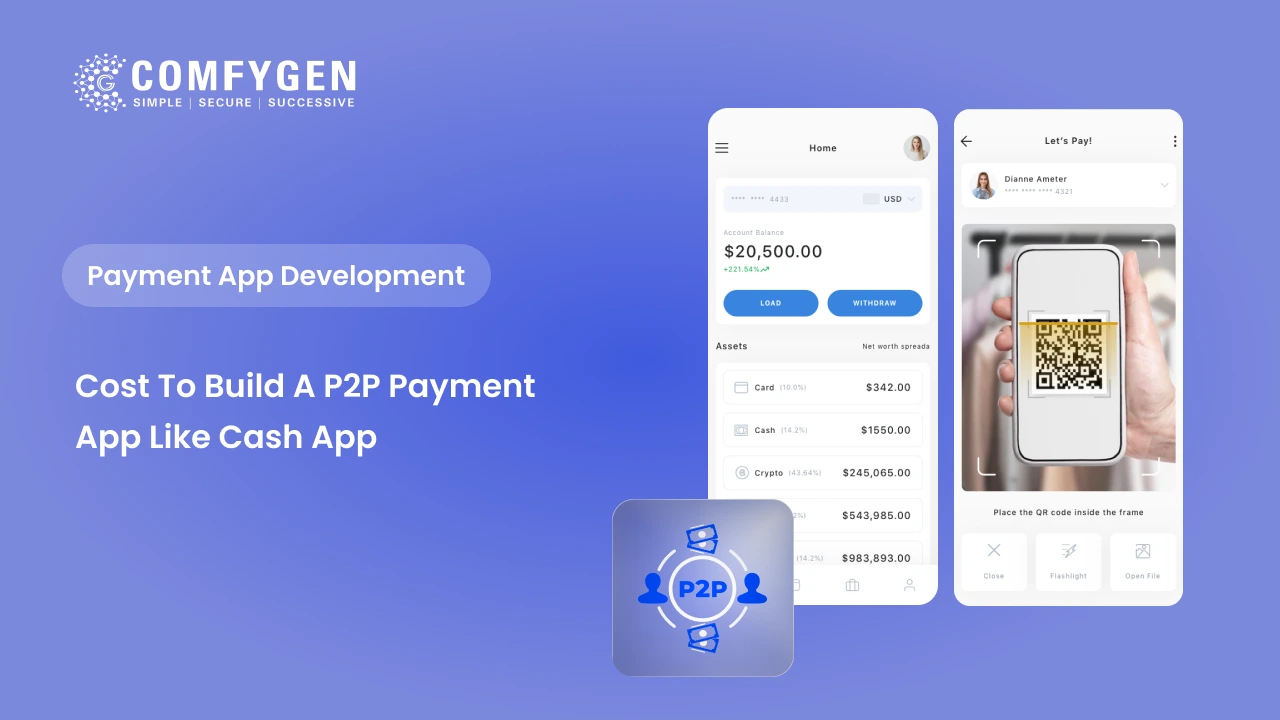How to Create a Food Delivery App: A Complete Step-by-Step Guide (2025)
Food delivery has a rich history that stretches far beyond the smartphone era. In fact, it all began in 1889 when King Umberto and Queen Margherita of Italy received the first recorded pizza delivery – personally delivered by the chef Raffaele Esposito. Over the next 130 years, food delivery evolved alongside technology, society, and culture – from Mumbai’s dabbawalas carrying home-cooked lunches in the 1890s, to Chinese food arriving at American doorsteps in the 1920s, and Domino’s 30-minute pizza guarantee in the 1960s.
This journey reflects how technology has completely changed the way we enjoy food. What once took hours now happens in minutes – from scrolling through simple digital menus to tracking your order in real time. With secure payments and personalized meal choices, food delivery apps have evolved through years of innovation, making it easier than ever to enjoy your favorite dishes right at home with a single tap.
If you’re planning to develop your own food delivery app, understanding this journey and the technology that powers it is the first step toward creating something extraordinary.
What is a food delivery app: An overview
A food delivery app is a digital platform that connects customers, restaurants, and delivery partners within one ecosystem to make ordering food quick, convenient, and efficient. It allows users to browse nearby restaurants, view menus, place orders, make secure payments, and track their food in real-time – all from their smartphone.
For restaurants, the app serves as an online storefront, helping them reach a wider audience without incurring significant marketing or logistics costs. For delivery partners, it creates earning opportunities through flexible, on-demand work.
A food delivery app bridges the gap between customer demand and restaurant supply, using technology to streamline every stage – from order placement and payment processing to dispatch and delivery.
Example includes popular platforms like Swiggy, Zomato, Uber Eats, and DoorDash have set industry benchmarks by offering fast delivery and seamless user experiences.
Tracking the Growth: Food Delivery Market by the Numbers
The online food delivery market is growing faster due to changes in customer behaviour, including factors such as convenience, digital adoption, and shifting lifestyles. According to Statista reports, the global market is expected to reach USD 1.40 trillion by 2025 and continue growing at a 7.63% annual rate, ultimately reaching around USD 2.02 trillion by 2030.
In the United States, the sector is thriving more than ever. Revenue is expected to reach USD 429.90 billion in 2025, representing a 21.7% increase from USD 353.30 billion in 2024.
By 2029, the U.S. food delivery market is expected to reach USD 563.40 billion, underscoring the profound impact of food delivery on some part of daily life. DoorDash leads the food delivery market with a 67% share, while Uber Eats follows with 23%, reflecting the competition and market share dynamics.
The study indicates that 67% of online customers visit the restaurant’s app more frequently than offline customers who dine in at the restaurant. This clearly highlights that digital engagement can drive higher revenue by building loyalty and long-term relationships with customers.
Common Food Delivery Business Models
Before diving into food delivery app development, one of the most crucial decisions is defining your business model – the foundation that determines how your app will function, generate revenue, and scale.
The food delivery industry typically follows three core business models: Aggregator, Order and Delivery, and Integrated. Each of these business models has its own benefit based on your goals, budget, and preferred level of operational control.
Aggregator Model
The aggregator model is like a digital food hub that links customers with multiple restaurants. Users can explore menus, place orders, and pay directly on the app. Once an order is placed, the restaurant handles food preparation and delivery (often through its own delivery fleet or a third-party courier).
Example:
Great food delivery apps like Uber Eats and DoorDash have successfully adopted this model. They provide visibility to thousands of restaurants without requiring them to manage their own food preparation. For instance, Uber Eats partners with restaurants for order processing, using local couriers or the restaurant’s in-house delivery team for fulfilment.
Order and Delivery Model
This model includes managing both restaurant listings and logistics. Here, the app not only allows customers to place orders but also takes responsibility for delivery through its own or third-party delivery partners.
Restaurants that don’t want to invest in delivery personnel benefit from this shared infrastructure, while customers enjoy a consistent delivery experience.
Example:
Food delivery platform like Zomato and Swiggy in India follow this model. They list multiple restaurants on their platform and handle the end-to-end delivery using their own riders. This approach gives them greater control over customer experience, delivery timing, and brand reliability.
Integrated Model
In the integrated model, restaurants solely manage every step of the process – from taking orders, preparing the food and delivering it to customers. This gives them complete control over quality, speed, and service. Such businesses often operate as cloud kitchens or restaurant chains with their own delivery teams.
Example:
Domino’s and Pizza Hut are classic illustrations of the integrated business model – they handle everything, from preparing food and packaging to doorstep delivery.
This approach ensures consistent quality and speedy service. Likewise, cloud kitchen brands such as Rebel Foods (known for Fasos and Behrouz Biryani) employ the same strategy, operating multiple brands from a single kitchen to boost efficiency and streamline operations.
Ready to Build Your Own
On-Demand Food Delivery App?
LET’S TALK
Building a Profitable Food Delivery App: Exploring Revenue Streams
Once your food delivery business model is clearly defined, the next step is building sustainable revenue streams. A solid revenue structure not only drives profit but also helps your business stay flexible amid changing trends and customer needs.
Top food delivery platforms like Swiggy, Zomato, DoorDash, and Uber Eats demonstrate that real success stems from diversifying income sources. Below are the primary revenue streams and their contributions to business growth.
Commission from Restaurants
This is the primary source of revenue for most food delivery platforms. Apps charge restaurants a percentage on every completed order to cover platform usage and visibility.
For example: Zomato typically charges partner restaurants between 15 and 25% per order (approx), depending on the restaurant’s popularity and delivery region.
Delivery Fees
Customers pay a delivery fee that varies based on distance, order size, or delivery time. This helps cover costs and reward drivers fairly. For instance, Swiggy employs dynamic pricing, with fees ranging from ₹20 to ₹50 depending on demand and distance, thereby balancing profit and service quality.
Subscription Fees
Subscription fees create steady, recurring revenue while improving customer loyalty through exclusive rewards.
For example, Zomato Gold and Swiggy One offer perks such as free deliveries, special discounts, and quicker service, keeping customers engaged and loyal to the brand.
In-App Advertisements
Restaurants and brands pay to feature their listings prominently in the app, enabling them to reach a wider audience. For example, DoorDash allows restaurants to run sponsored ads that appear at the top of search results, helping them gain visibility during peak order times.
Partnerships and Promotions
Collaborations with local brands, beverage companies, or FMCG giants can create mutual value through co-branded campaigns and exclusive offers. For example, Uber Eats has partnered with Coca-Cola to offer special combo deals and promotions, thereby increasing customer engagement and revenue for both its partners and Coca-Cola.
Premium Services
Offering added-value options for users who want a faster and more personalised experience can significantly enhance revenue. For example, some delivery apps offer priority delivery for an extra fee during high-demand hours, while others include VIP support or custom meal planning as premium services.
By combining these revenue streams strategically, food delivery businesses can create a more stable and scalable financial structure. This diversified approach not only ensures steady cash flow but also strengthens the brand’s ability to withstand competition and market fluctuations.
The Complete Food Delivery App Journey: Key Features That Make It Work
A food delivery app isn’t just a single interface – it’s a connected system that links customers, restaurants, delivery partners, and admins through one ecosystem. Each panel plays a distinct role in ensuring that every order, from browsing a menu to doorstep delivery, happens smoothly and efficiently.
Customer Panel
The customer panel is the face of your food delivery app – it defines the user experience and directly influences retention. It should be simple, intuitive, and built for convenience.
- Easy Sign-Up and Social Login: Quick registration through email, phone number, or social accounts enables users to start ordering with minimal friction.
- Browse Restaurants and Menus: Customers can explore nearby restaurants, cuisines, and menu items with rich visuals and filters for pricing, ratings, or dietary preferences.
- Real-Time Order Tracking: A live GPS tracker enables customers to monitor their order status, from preparation to doorstep delivery.
- Ratings and Reviews: Enables users to share feedback on restaurants and delivery experiences, improving trust and quality assurance.
- Multiple Payment Options: Secure checkout with credit/debit cards, UPI, wallets, and cash-on-delivery ensures flexibility for every customer.
- Reorder and Subscription Plans: Frequent customers can quickly reorder favourite meals or opt for meal plans and subscriptions for recurring deliveries.
- GPS-Based Restaurant Discovery: The app automatically detects location and recommends the best-rated restaurants nearby.
- Push Notifications: Keep customers informed about order status, offers, and personalised discounts to encourage repeat purchases.
Restaurant Panel
The restaurant panel empowers vendors to manage daily operations efficiently and maintain consistent service quality.
- Manage Menus and Pricing: Restaurant owners can easily update menus, item availability, and pricing in real time.
- Accept/Reject Orders Instantly: Instant order notifications let restaurants confirm or decline requests based on kitchen capacity.
- Real-Time Order Alerts and Updates: Automatic alerts enable restaurants to stay on top of every order, reducing delays and miscommunications.
- Track Deliveries and Assign Drivers: Restaurants can track delivery partners in real time or assign available drivers directly from the dashboard.
- Revenue and Commission Tracking: Integrated financial tools provide transparency on earnings, commissions, and payouts.
- Customer Feedback Management: Direct access to customer reviews helps restaurants identify improvement areas and maintain service quality.
- Analytics Dashboard: Detailed sales insights and performance metrics support data-driven decisions.
- Promotions and Discount Management: Restaurants can launch special offers, coupons, and seasonal discounts to attract more customers.
Driver Panel
The driver app ensures smooth coordination between restaurants and customers while optimizing delivery efficiency.
- Easy Registration and Profile Setup: Drivers can sign up, verify documents, and create profiles quickly.
- Accept/Reject Delivery Requests: They have the flexibility to accept orders based on proximity or availability.
- Optimized GPS Routes: Integrated navigation provides the shortest and most efficient delivery routes.
- Real-Time Order Pick-Up and Drop Alerts: Instant alerts notify drivers about order readiness, pick-up, and delivery instructions.
- Delivery History and Earnings Reports: Drivers can review completed orders, payment summaries, and performance stats.
- In-App Chat/Call: Enables quick communication with customers or restaurants to resolve delivery issues.
- Wallet Integration: All earnings, incentives, and tips are automatically added to the in-app wallet for easy withdrawals.
- Push Notifications: Keep drivers updated on new delivery requests, payments, or route changes.
Admin Panel
The admin panel is the command centre of your food delivery app ecosystem, allowing centralised control over all operations.
- Centralized Dashboard: Offers a real-time overview of orders, users, restaurants, and deliveries in one place.
- Manage Customers, Restaurants and Drivers: Admins can monitor, verify, or deactivate user accounts as needed.
- Order and Delivery Tracking: Provides complete visibility into active and completed orders across regions.
- Revenue and Commission Settings: Admins can define commission structures, service charges, and payment cycles for restaurants and drivers.
- Vendor Approvals: The system allows quick approval or rejection of new restaurant registrations to maintain quality control.
- Content and Offer Management: A built-in CMS enables admins to manage banners, promotions, and offers on the platform.
- Advanced Analytics and Reporting: Access to detailed performance data, including order volume, revenue trends, and user behaviour, helps optimize strategy.
- Multi-Region and Multi-Branch Control: Ideal for enterprise-level applications, this feature enables administrators to manage multiple cities, outlets, or franchise networks from a single interface.
Want to Develop Your Own
Food Delivery App for Your Business
LET’S TALK
How a Food Delivery App Architecture Works – Step by Step Explained
Ever wondered what happens behind the scenes when you order your favourite meal online? From tapping “Order Now” to watching your delivery arrive in real-time, every action passes through a complex yet beautifully coordinated system. Let’s break down this architecture in simple terms, layer by layer, to understand how a food delivery app truly works.
The Frontend Layer (Who interacts with the system)
The process begins when different users interact with the system:
- Restaurant Owners – update menus, check orders, and manage availability.
- Admin – manages the platform (users, commissions, restaurants, delivery partners).
- Customers – place food orders through the app or website.
- Delivery Partners – accept delivery requests and update delivery status.
Each of these users interacts through a UI (User Interface) – which could be a mobile app or a web dashboard.
Whatever action they take (such as “Place Order” or “Add Menu Item”) is sent to the API Gateway.
API Gateway (The traffic controller)
Once a user acts, the request goes to the API Gateway, the central controller that manages all communication between users and backend systems.
The API Gateway serves as the single point for all requests originating from web and mobile applications. It:
- Validates tokens and permissions (via Auth Service)
- Routes requests to the correct microservice
- Manages load balancing, rate limits, and logging
- Improves performance with caching
Example Technologies:
NGINX, Kong, Spring Cloud Gateway, or AWS API Gateway
Authentication and Authorization (Security checkpoint)
Before the API Gateway allows any operation, it communicates with the Authentication and Authorization service. Every user (Customer, Delivery Partner, Restaurant Owner, Admin) must be verified. This service:
- Uses JWT tokens or OAuth 2.0
- Ensures each user has the right access (e.g., only restaurants can edit menus)
- Works closely with API Gateway to authorize API calls
Tech stack:
Keycloak, Auth0, or custom-built Node.js/Java service.
Microservices Layer (The brain of the app)
Here’s where most of the “thinking” happens. The API Gateway sends requests to various microservices, each of which is responsible for a specific key function. This make sure modularity, scalability, and easy maintenance.
| Microservice | Responsibility |
| User Service | Manages user profiles, login, registration, and user details. |
| Payment Service | Handles all payments (integration with Razorpay, Paytm, Stripe). Validates payment and notifies order service on success/failure. |
| Order Service | The brain of the system – handles the entire order process, order status, and interaction with other services. |
| Menu Service | Manages restaurant menus, prices, and availability. Integrated with ElasticSearch for fast search results. |
| Tracking Service | Tracks live delivery partner locations, delivery route, and status updates. |
All services communicate with each other via:
- REST APIs (for direct synchronous calls)
- Message Queue (for asynchronous communication)
Each microservice is independent, meaning if one service fails (say, payment), others still work fine. They communicate through APIs and send data to the Database, Elastic Search, or Messaging Queue, depending on the need.
Data Layer (Where information is stored and searched)
This layer stores and retrieves all critical data.
Database: Stores structured information, including user details, orders, and menus.
Each microservice has its own database (microservice database isolation).
Examples:
- PostgreSQL/MySQL → User, Order, Payment
- MongoDB/Redis → Tracking and location data
- ElasticSearch → Menu and order searches
This isolation prevents one service from affecting others.
Elastic Search: Handles quick searching and filtering, for example, “Find restaurants near me” or “Search by cuisine.”
Elastic search maintains an index of data for rapid retrieval, ensuring a seamless user experience during periods of high traffic.
Messaging Queue: The Message Queue (like RabbitMQ, Kafka, or AWS SQS) handles event-driven communication (things that don’t need an instant response).
This improves speed and reliability. Example events:
- OrderPlaced
- PaymentConfirmed
- OrderCancelled
- DeliveryAssigned
When an order is placed, the order service sends an event to the queue, which is then processed by other services (such as Notification or Tracking), and acts accordingly.
Tracking Engine (Real-time monitoring)
This enables live tracking for customers on the app map. This engine powers real-time delivery tracking.
- It collects live location data from delivery partners.
- Stores it in ElasticSearch.
- Updates customers’ screens in real time via WebSockets or Firebase Realtime Database.
Example:
A customer can see the delivery partner’s live movement on the map in the app.
Notification Service (Keeping everyone informed)
Once an event happens – like an order being placed, accepted, or delivered – the notification service triggers relevant updates:
- Push notifications to customers (“Your order is on the way!”),
- Alerts to delivery partners (“New order available nearby”),
- Emails or dashboard updates for restaurants (“New order received”).
This service connects directly with users via mobile or web, ensuring real-time updates across all participants.
Feedback Loop to Users
At last, all updated data (order status, payment confirmation, delivery ETA, etc.) flows back through the API Gateway to the UI, so users see the real-time status.
How a Food Delivery App Is Built: Step-by-Step Process
Developing a food delivery app is a step-by-step journey – from in-depth research to real-time performance optimization. Each stage ensures your food delivery app runs smoothly and provides a seamless experience for users, restaurants, and delivery partners.
Market Research and Planning
The first step to create a food delivery app is understanding the market. This involves analyzing customer behaviour, studying competitors, and identifying trends in the on-demand food market space. These insights help define your app’s unique value, core features, target audience, and revenue model – forming a solid foundation for success.
Designing the UI/UX
Once the business plan is clear, the UI/UX design phase focuses on crafting an interface that feels intuitive and visually consistent. Wireframes and prototypes help visualise the customer journey, from browsing restaurants to tracking deliveries, ensuring users can complete any task with just a few taps.
App Development (Frontend and Backend)
With the design ready, mobile app developers begin building the frontend (what users see) and backend (where data is processed). The backend manages orders, restaurant data, delivery tracking, and user authentication, while the frontend ensures users interact smoothly through responsive screens and fast loading times.
Integration with Third-Party Services
Modern food delivery apps rely on multiple external systems to enhance functionality. This includes integrating APIs for live location tracking, maps, notifications, OTP-based logins, and secure payment gateways. These integrations ensure the app communicates effectively with external platforms.
Testing for Stability and Security
Before launch, the app undergoes rigorous testing to identify and fix bugs, performance lags, and security vulnerabilities. Both manual and automated tests are performed to make sure smooth navigation, accurate order tracking, and reliable payment operations.
Deployment and Launch
Once testing is complete, the app is deployed on app stores (Android and iOS) and connected to live servers. Deployment ensures that backend systems are configured correctly, allowing the app to handle real-world traffic without downtime.
Optimize and Scale Performance
Following the launch, the focus shifts to continuous improvement. Real-time analytics and user feedback are continuously monitored to optimize performance, enhance load speed, resolve issues, and refine features. As the user base grows, the infrastructure is scaled to maintain speed and reliability even during peak hours.
Transforming Food Delivery with Artificial Intelligence
AI isn’t just improving food delivery – it’s redefining how the entire system operates, from order placement to doorstep delivery. By combining data, automation, and predictive intelligence, AI creates a more intelligent, faster, and more customer-focused ecosystem.
Hyper-Personalized Recommendations
In AI powered food delivery app development, AI studies user habits, food preferences, time, and even weather to suggest the best dishes customers may want. These smart recommendations help increase user engagement, improve customer satisfaction, and bring more repeat orders for your food delivery business.
Real-Time Route Optimization
Machine learning algorithms can analyze account traffic, weather, and volume of orders, and provide the most optimal delivery lanes, reducing expenditures and accelerating delivery times.
Predictive Demand and Inventory Planning
AI forecasts demand spikes, such as lunchtime spikes or festival weekends, enabling restaurants to stock ingredients strategically and minimise food waste.
AI-Powered Chatbots and Voice Assistants
AI-powered chatbots can handle order tracking, refunds, and FAQs. Voice-enabled ordering through Alexa or Google Assistant adds convenience and accessibility.
Smart Menu Engineering with AI
Based on customer reviews and sales data, AI enables restaurants to align their menus, push the hot selling items, and suggest profitable new combinations.
Fraud Detection and Order Verification
AI based food delivery apps are monitors transaction data to detect suspicious activity, reducing payment fraud and fake orders.
Sentiment Analysis & Feedback Insights
Natural Language Processing (NLP) tools analyze reviews and social media mentions to enable restaurants to understand customer sentiment and implement data-backed improvements.
Autonomous Deliveries
AI is the brain behind delivery robots and drones that navigate routes, avoid obstacles, and ensure accurate, contactless deliveries.
Elevate Your Food Delivery App
with AI (Artificial Intelligence)
Let’s Connect
Cost To Create a Food Delivery App Like Uber Eats
Create a food delivery app like Uber Eats is a significant digital investment that requires careful planning, thoughtful design, and ongoing improvements. The total cost varies based on your best food delivery app’s features, chosen technology stack, and target platforms.
If you’re starting with an MVP (Minimum Viable Product), including essentials like restaurant listings, order tracking, and secure payments; prices usually start from $40,000. However, for a full-featured app with AI-driven recommendations, real-time tracking, multi-vendor support, and a robust backend, costs can go beyond $200,000.
Here’s a quick look at how expenses are distributed across the main stages of food delivery app development:
| Phase | Timeline | Estimated Cost |
| Research & Planning | 2–4 weeks | $3,000 – $10,000 |
| UI/UX Design | 3–6 weeks | $5,000 – $20,000 |
| Core Development | 3–6 months | $20,000 – $120,000 |
| Security & Compliance | Ongoing | $10,000 – $40,000 |
| Testing & QA | 1–2 months | $8,000 – $25,000 |
| Deployment & Launch | 2–4 weeks | $2,000 – $10,000 |
| Maintenance & Updates | Continuous | $1,000 – $10,000/month |
Emerging Technologies Transforming the Future of Food Delivery Apps
The food delivery industry is no longer just about getting meals from restaurants to doorsteps; it’s about creating faster, smarter, and more personalized experiences. Emerging technologies, such as AI, IoT, blockchain, and AR, are reshaping every stage of the delivery journey – from how orders are placed to how they’re tracked and fulfilled. These innovations are helping businesses stay competitive while offering customers convenience and trust like never before.
Artificial Intelligence (AI)
AI enhances food delivery apps by personalizing recommendations, optimizing routes in real time, predicting demand, and powering chatbots for 24/7 customer support, making the entire process smarter and more efficient.
Blockchain for Transparency and Security
We create a food delivery app solutions powered by blockchain technology. Blockchain ensures tamper-proof records of every order and payment, enhancing transparency, trust, and data security across the food delivery chain.
Drone and Robot Deliveries
Autonomous drones and robots are redefining delivery speed and safety by offering contactless, energy-efficient, and cost-effective solutions for short-distance deliveries.
Augmented Reality (AR)
AR enables users to view realistic 3D visuals of their meals before ordering, making the experience more immersive and helping to reduce post-delivery dissatisfaction.
IoT-Powered Smart Operations
IoT powered food delivery app devices connect kitchens, delivery vehicles, and customers in real time, optimising food quality, tracking routes, and ensuring timely deliveries.
Voice Ordering and Smart Assistants
With smart devices like Alexa and Google Assistant, users can now place food orders hands-free, making the process more intuitive and effortless.
Sustainability-Focused Innovation
Companies are leveraging technology to reduce their carbon footprint through eco-friendly packaging, route optimization, and efficient resource use.
Predictive Data Analytics
Advanced analytics help predict demand, manage inventory, and improve customer experiences through data-driven insights.
How Comfygen Can Help You Build a Powerful Food Delivery App
Comfygen is a leading food delivery app development company dedicated to creating scalable, feature-packed, and user-friendly food delivery app solutions that help businesses thrive in the on-demand economy. Whether you’re a startup building your first MVP or an established brand expanding your delivery reach, we help you make a food delivery app that combines innovation with performance. Here’s how we make it happen:
Custom Development Approach
We don’t rely on templates. Our mobile app development team designs and develops your food delivery app from scratch – tailored to your business model, whether it’s a restaurant-specific delivery system or a multi-vendor platform like Uber Eats.
Seamless User Experience
Our UI/UX experts focus on creating intuitive, visually appealing designs that make ordering food quick and enjoyable for users.
Advanced Technology Stack
We leverage modern technologies, including Flutter, React Native, Node.js, and AI-powered data analytics, to ensure your app performs seamlessly across various devices.
Real-Time Features
From live order tracking and delivery partner dashboards to AI-based recommendations and secure payment gateways – we integrate everything users expect in a next-gen app.
End-to-End Support
Our services go beyond food delivery mobile app development. We assist with app store deployment, performance optimization, and post-launch maintenance to ensure your platform runs smoothly.
Scalable Architecture
Whether you start small or plan to serve multiple cities, we build a backend that scales effortlessly as your business grows.
With Comfygen Technologies, you get more than just an app – you get a long-term technology partner who understands your vision and turns it into a seamless digital experience.
Final Thoughts
The journey of online food delivery has evolved from simple phone orders to advanced on-demand food delivery apps powered by AI and automation. Today, convenience, real-time tracking, and personalized experiences are defining the industry’s success. Building a food delivery app is no longer just about connecting customers to restaurants – it’s about delivering a seamless digital experience that keeps users coming back.
From selecting the right food delivery business model to integrating key food delivery app features, such as GPS tracking, push notifications, and secure payments, every detail impacts user satisfaction and brand growth. While the cost of food delivery app development may vary based on complexity and platform, investing in a scalable, intuitive, and future-ready solution ensures long-term returns.
At Comfygen Technologies, we specialize in food delivery app development that empowers startups and enterprises to thrive in this competitive market. Our delivery app development team builds customized, high-performance food delivery mobile apps tailored to your business goals – helping you launch faster, operate smarter, and grow sustainably in the booming online food delivery space.

Mr. Saddam Husen, (CTO)
Mr. Saddam Husen, CTO at Comfygen, is a renowned Blockchain expert and IT consultant with extensive experience in blockchain development, crypto wallets, DeFi, ICOs, and smart contracts. Passionate about digital transformation, he helps businesses harness blockchain technology’s potential, driving innovation and enhancing IT infrastructure for global success.

